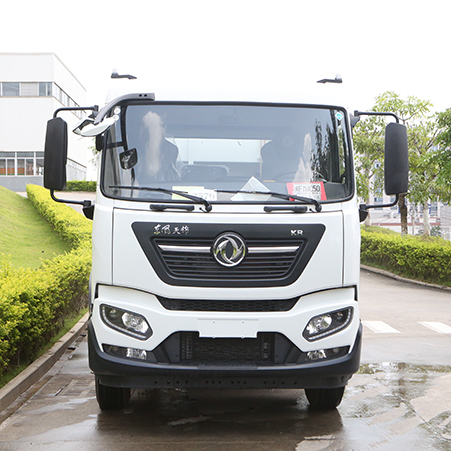Waste management is an essential public service that ensures our environment remains clean and sustainable. It involves the collection, transportation, processing, and disposal of waste materials. Proper waste management prevents pollution, conserves resources, and protects human health.
Garbage trucks are the workhorses of waste management. They are responsible for the efficient collection and transport of waste from residential and commercial areas to disposal facilities.

What is a Compression Garbage Truck?
A compression garbage truck, also known as a compactor truck, is a type of waste collection vehicle designed to compress and compact waste, increasing the amount of waste the truck can carry. This feature makes them highly efficient, as they can transport more waste in a single trip compared to non-compacting garbage trucks. By reducing the volume of the waste, these trucks help optimize the collection and transportation process, saving time, and fuel, and reducing emissions.
Historical Background
The concept of the garbage truck dates back to the early 20th century when the need for systematic waste collection became apparent in growing urban areas. Early garbage trucks were simple open-bed vehicles that required significant manual labor. The introduction of hydraulic systems in the mid-20th century revolutionized the industry, leading to the development of compression garbage trucks. These innovations allowed for more efficient waste management and reduced the physical strain on sanitation workers.
How Compression Garbage Trucks Work
- Loading Waste: Waste is loaded into the hopper at the rear, front, or side of the truck, depending on the type.
- Compression Process: A hydraulic press compacts the waste in the hopper, significantly reducing its volume.
- Storage: The compacted waste is pushed into the truck’s storage compartment, allowing for more waste to be collected.
- Transportation: Once the truck is full, it transports the compacted waste to a landfill, recycling center, or waste processing facility.
- Unloading: The truck’s hydraulic system ejects the compacted waste from the storage compartment at the disposal site.
Types of Compression Garbage Trucks

Compression garbage trucks come in three main types, each designed for specific waste collection needs.
Rear Loader
Rear loader trucks have a hopper at the back where waste is loaded. They are the most common type and are often used for residential waste collection. The waste is manually or mechanically loaded into the hopper and then compacted into the truck’s body.
Front Loader
Front loader trucks are typically used for commercial waste collection. They have forks on the front that lift large dumpsters over the truck, emptying the contents into the hopper. The waste is then compacted and stored in the truck’s body.
Side Loader
Side loader trucks can be automated or manual and are commonly used in residential areas. Automated side loaders use a robotic arm to lift and empty bins into the hopper, making the process quicker and reducing the need for manual labor.
Benefits of Compression Garbage Trucks
- Efficiency: By compacting waste, these trucks can carry more, reducing the number of trips needed and saving time and fuel.
- Cost-Effective: Fewer trips mean lower operational costs, including fuel, maintenance, and labor.
- Environmental Benefits: Reduced trips result in lower carbon emissions, contributing to a cleaner environment.
- Reduced Noise and Odor: Compaction reduces the volume of waste, minimizing odor and noise during collection.
- Improved Hygiene: These trucks help maintain cleaner streets by securely containing waste, reducing litter and contamination risks.
Compression garbage trucks are indispensable in modern waste management systems. Their ability to compact waste enhances efficiency, cost-effectiveness, and environmental sustainability. As urban populations grow and waste production increases, the role of these trucks becomes even more critical in maintaining public health and cleanliness.
FAQs
1. How much waste can a compression garbage truck hold?
Compression garbage trucks can hold significantly more waste than non-compacting trucks. On average, they can carry up to three times more waste, depending on the truck’s size and compaction ratio.
2. Are there any environmental benefits to using compression garbage trucks?
Yes, these trucks reduce the number of trips needed to transport waste, which lowers fuel consumption and carbon emissions. The compaction process also minimizes waste volume, reducing landfill space requirements.
3. What maintenance is required for compression garbage trucks?
Regular maintenance includes hydraulic system checks, lubrication of moving parts, inspection of compaction mechanisms, and general vehicle upkeep such as engine and brake servicing.
4. Can compression garbage trucks handle all types of waste?
While they are designed to handle general waste, certain hazardous materials and large, bulky items may not be suitable. Specialized trucks and procedures are used for hazardous or oversized waste.
5. How do automated side loader trucks benefit waste collection?
Automated side loaders improve efficiency by using a robotic arm to collect bins, reducing the need for manual labor. This speeds up the collection process and enhances worker safety by minimizing direct contact with waste.






